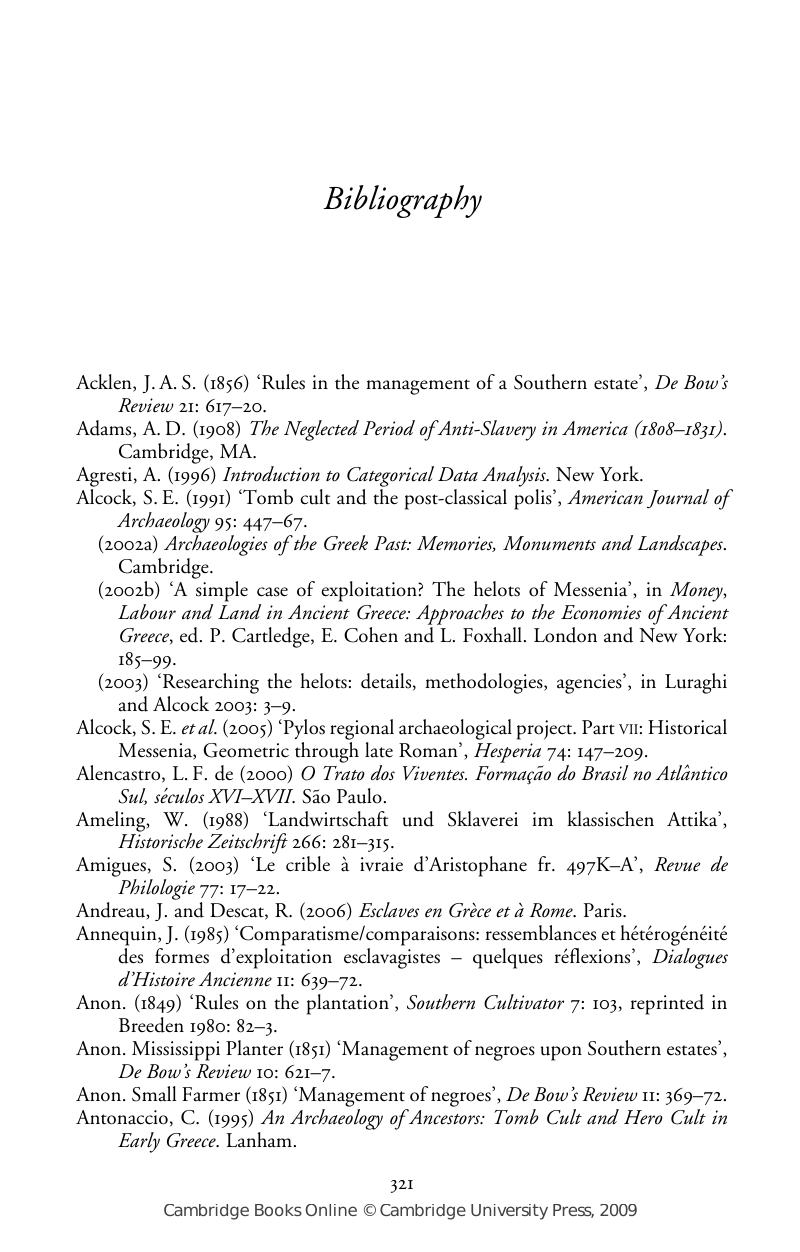Book contents
- Frontmatter
- Contents
- List of figures
- List of tables
- List of contributors
- Acknowledgments
- Part I SLAVERY, SLAVE SYSTEMS, WORLD HISTORY, AND COMPARATIVE HISTORY
- Part II ECONOMICS AND TECHNOLOGY OF ANCIENT AND MODERN SLAVE SYSTEMS
- Part III IDEOLOGIES AND PRACTICES OF MANAGEMENT IN ANCIENT AND MODERN SLAVERY
- Part IV EXITING SLAVE SYSTEMS
- Part V SLAVERY AND UNFREE LABOUR, ANCIENT AND MODERN
- Bibliography
- Index
- References
Bibliography
Published online by Cambridge University Press: 22 September 2009
- Frontmatter
- Contents
- List of figures
- List of tables
- List of contributors
- Acknowledgments
- Part I SLAVERY, SLAVE SYSTEMS, WORLD HISTORY, AND COMPARATIVE HISTORY
- Part II ECONOMICS AND TECHNOLOGY OF ANCIENT AND MODERN SLAVE SYSTEMS
- Part III IDEOLOGIES AND PRACTICES OF MANAGEMENT IN ANCIENT AND MODERN SLAVERY
- Part IV EXITING SLAVE SYSTEMS
- Part V SLAVERY AND UNFREE LABOUR, ANCIENT AND MODERN
- Bibliography
- Index
- References
Summary

- Type
- Chapter
- Information
- Slave SystemsAncient and Modern, pp. 321 - 359Publisher: Cambridge University PressPrint publication year: 2008



